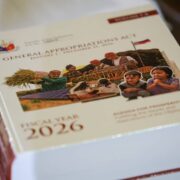Cordillera police eye income ‘survey’ in drive vs marijuana plantations

BAGUIO CITY—If they’re really earning a lot from growing such “high-value” crops, how come it doesn’t show?
This is one of the questions police and local government officials want answered as they design a master plan to curb the illegal cultivation of marijuana, particularly in the provinces of Kalinga and Benguet.
The regional police chief of the Cordilleras, Police Brig. Gen. David Peredo Jr., said they might conduct an “economic survey” in far-flung areas like Mt. Chumanchil in Kalinga’s Tinglayan town to find out how much weed-growing locals actually earn.
“We realized the problem wasn’t the remoteness of the area. The problem was the people there,” Peredo said at a media briefing earlier this week.
“So we need to go deep into the barangays and determine how much and where the suspected marijuana planters spend their income from weed production. If it pays for their kids’ tuition, we can offer them scholarships. We can invest in new products and train them in new skills,” Peredo said at the Baguio leg of the “Bagong Pilipinas” governance campaign on July 30, featuring the Department of the Interior and Local Government (DILG).
“But if the farmers already got rich, they wouldn’t need to grow (pot) anymore,” he said.
According to the Cordillera police, some P6.451 billion worth of marijuana and crystal meth (“shabu”) were confiscated and destroyed in the region from 2022 to June this year.
The police conducted 1,394 antidrug operations during the period, including the periodic “weed-eradication” missions that led to the discovery of 8.45 million uprooted marijuana plants, about 7.6 tons of dried weed stalks and fruiting tops, 729.22 milliliters of marijuana oil, and about 1.5 kilograms of marijuana seeds.
PNP Cordillera has also arrested 785 suspected drug traffickers in the last three years.
The Whang-Od factor
Tinglayan, a fourth-class municipality with a population of around 13,000 people (as of the 2020 census), has been the subject of police surveillance since most of the weed plantations were found within or around Mt. Chumanchil.
For the past eight years, the town has also become a top tourist destination especially attracting foreign and local tattoo enthusiasts who have learned about Apo Whang-od, the oldest living Kalinga “mambabatok” (traditional tattooist) who has gained national and international fame.
“Some people pretend to be tourists and come to Tinglayan to buy marijuana” and are usually caught by authorities in transit when they leave Kalinga, Peredo added.
Not natural growth
In the Cordillera jails, 352 of the current 919 inmates are booked for drug-related cases, according the Bureau of Jail Management and Penology.
Peredo said the public must dismiss the notion that marijuana grows naturally in these highlands, since the locals caught engaging in its illicit cultivation still followed certain methods.
“We flew to Chumanchil by helicopter and discovered that (weed farms) are grown out of portions of the mountain that underwent kaingin (slash-and-burn farming). When they harvest marijuana from that end, they burn the other half of the mountain and plant there. Then they move back again to prepare new plantations. That’s what we found out,” he said.The police also found makeshift shelters containing provisions and equipment for farmers tending the plantations. Only one farmer, an elderly man who was caught drying marijuana, was arrested this year, Peredo said.
In 2022, the Cordillera Peace and Order Council and the Cordillera Regional Development Council endorsed a master plan crafted by the Tinglayan government to convince such farmers to produce other crops, said Araceli San Juan, the DILG Cordillera director. A local nongovernment organization also formed the Mount Chumanchil Task Force to find alternative sources of livelihood for the weed growers.
Local government operations officer Alfrainer Partido, who attended a dialogue with Tinglayan officials two years ago, said one lasting solution proposed was the construction of a new road that could hopefully entice Mt. Chumanchil residents to grow vegetables instead, since it would give them easier access to public markets. INQ
















